10 Comprehensive Strategies to Enhance Demand Forecasting and Achieve Optimal Business Results (Hint: Let’s Automate!)

Using data to master predictability
In today's hyper-dynamic markets, staying ahead of demand volatility hinges on mastering data-driven predictability and crafting agile models that anticipate customer needs and market trends at scale. Predictive demand intelligence, powered by AI and advanced analytics, has become a crucial weapon in how businesses navigate today's volatile markets.
By leveraging cutting-edge technology and sophisticated algorithms, data scientists are gaining a deeper understanding of consumer behavior, identifying emerging trends, and making informed decisions that drive business success.
This article arms you with 10 battle-tested strategies to conquer demand volatility. Join us as we delve into the technical nitty gritty needed to:
build high-performance forecasting models
optimize inventory levels
boost profitability through dynamic pricing
exceed customer expectations with precise product availability
10 Comprehensive Strategies to Enhance Demand Forecasting and Achieve Optimal Business Results (Hint: Let’s Automate!)
1. Analyze historical sales data
By analyzing your historical data, you can identify recurring patterns that help you understand customer preferences and make more informed predictions for future demand. This approach has been utilized by businesses for years, but the key now is to take it a step further by overlaying external factors, specifically event data, onto your historical data.
This holistic approach allows you to see the bigger picture and adapt your strategies accordingly and is best done by comparing your transaction data with historical event data to pinpoint impact. This should factor in:
Event type and subtype
Event frequency/rarity
Event size
Proximity to your locations
Often, companies discover attributable patterns that once appeared random, such as college sports, academic sessions, or mid-tier professional conferences that may occur with some degree of frequency throughout the year and within close enough proximity to your business that it has an impact.
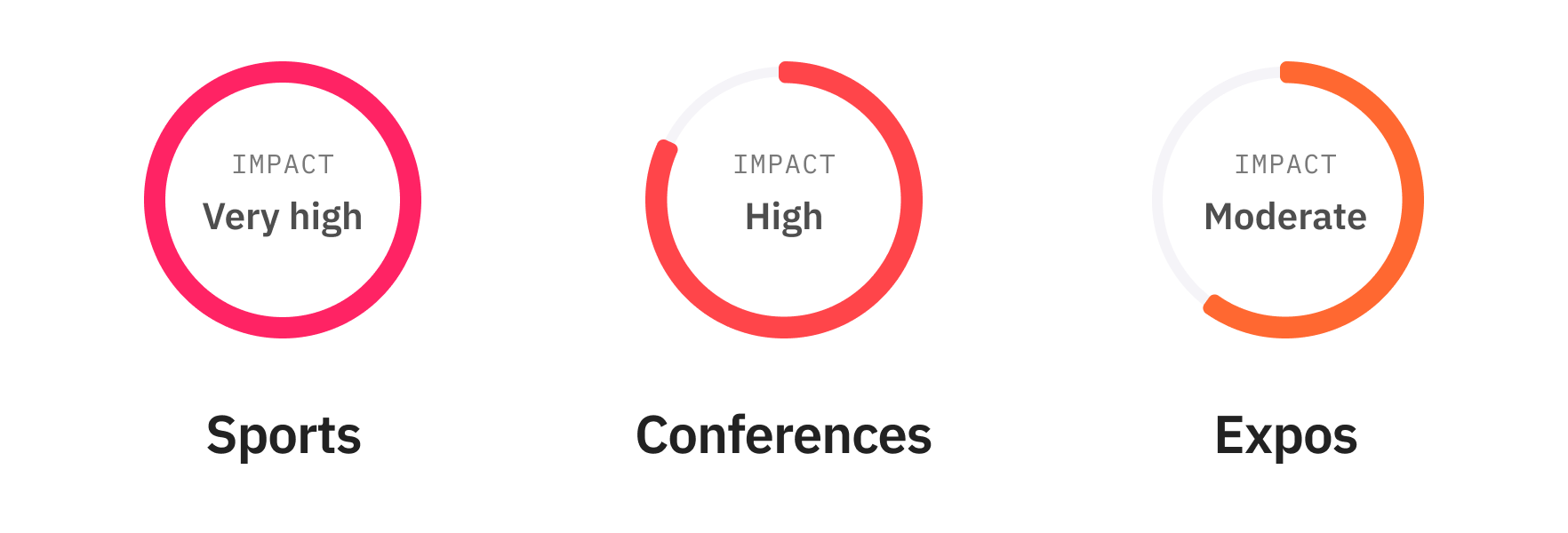
With this additional layer of context, you’re able to understand the demand impact by location based on events. This enables businesses to adjust operations in future around events, such as labor scheduling, supply, and pricing.
2. See how your data coverage compares to industry standards
Already tracking or incorporating event data today? Measure the depth, quality, and accuracy of your existing event data sources against key metrics to better understand the gaps you might have in coverage.
PredictHQ's Event Harmonization process quickly compares datasets so you can easily identify what gaps your existing data has across different event categories, the total number of events, and quality of data to best understand the impact of what you may be missing. The process compares your dataset against key metrics including:
Venue error rate
Total missing events
Missing events by predicted attendance
Start and end time error rate
Geo-coding error rate
Duplicates
And more

By measuring the accuracy of your event data, you can ensure that the information you have is up-to-date and reliable and if it's not, understand how much of a gap you’re experiencing. Accurate data can help you avoid making decisions based on outdated or incorrect information, leading to more successful outcomes for your business.
3. Integrate trusted third-party data
Causal inference and external data integration are crucial components in understanding the true drivers of demand within a market. By incorporating a variety of external data sources such as local events, consumer spending patterns, and weather data, businesses can gain holistic insights that go beyond traditional analytics. Many of these businesses incorporate weather into their forecasting models, but seem to overlook local events such as conferences, marathons, parades, and more – resulting in a major blind spot in their demand planning strategies. Events, both local and global, play a significant role in driving consumer behavior, spending, and demand patterns.
Once you take step 1 above, you’ll understand which types of events are driving demand up and down for your business, and to what extent. From major sporting events and concerts to conferences and public holidays, PredictHQ's predictive demand intelligence platform and APIs cover a wide range of events that can have a significant impact on demand.
Armed with these insights, organizations can integrate this data into their models to fine-tune their forecasting and make data-driven decisions to ensure optimal business results.
4. Layer various datasets to reduce estimation variance
With more data, there is a higher likelihood of uncovering valuable insights that can drive more accurate forecasts. Data professionals are familiar with combining data from multiple sources, but as technology continues to evolve and new tools and methods are made available, this data layering must evolve as well. Enabling seamless integration of diverse datasets empowers teams to spend less time merging these datasets and gives them more time to analyze and deliver key insights.
For example, joining event data and point of interest data (POI) to unlock local demand insights about holidays, concerts, sports, festivals, and more tied to unique locations. We join these datasets together using Placekey, a free, universal standard identifier for any physical place. The combined data sets provide even further granularity and precision by clarifying exactly what is driving demand at a location.
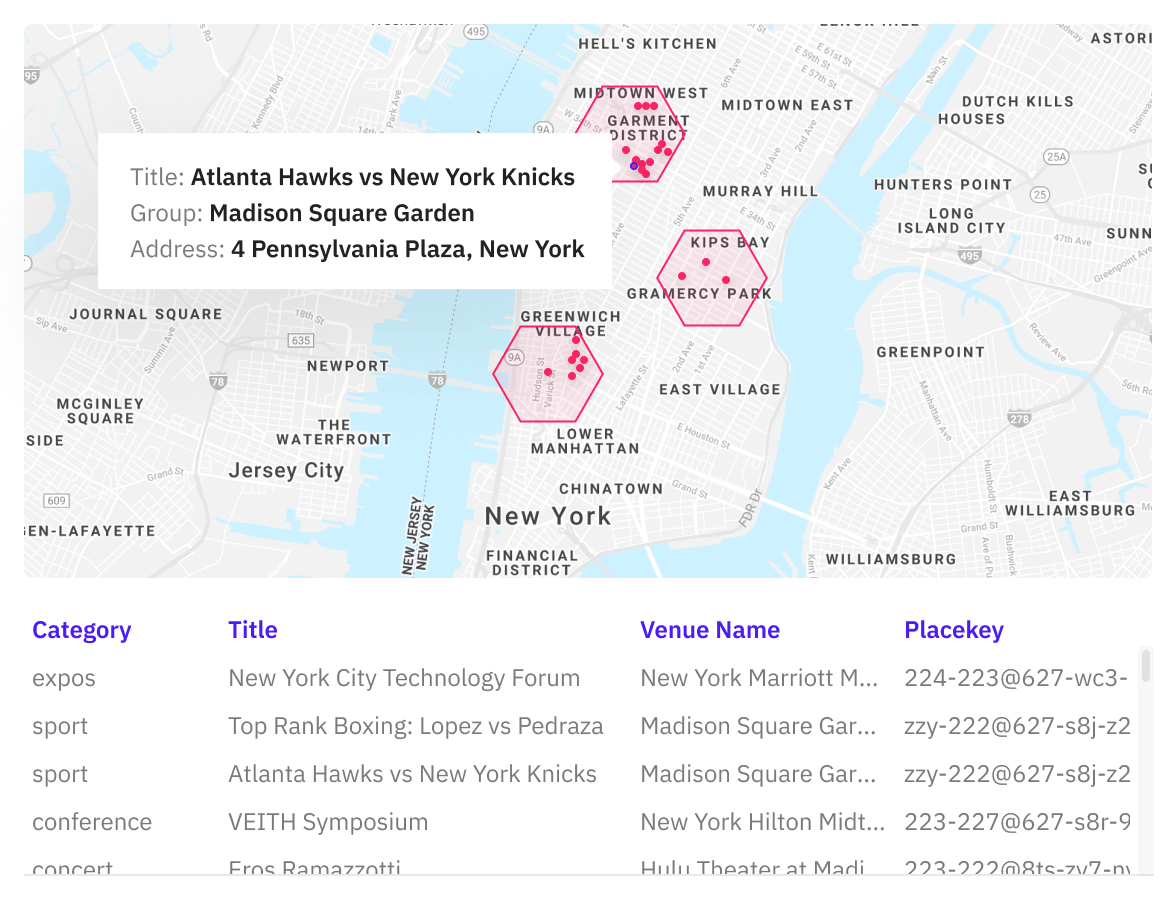
5. Seek the latest capabilities of predictive analytics
Harness the power of predictive demand intelligence to extract meaningful insights from vast datasets. By employing statistical models and algorithms, organizations can identify hidden patterns and make data-driven decisions to optimize demand forecasting accuracy.
By understanding these patterns, leading companies across industries anticipate potential disruptions in the market and dynamically respond to changing consumer demands. This proactive approach not only minimizes supply chain problems and operational inefficiencies, but also helps businesses capture lost revenue opportunities.
For example, businesses in the accommodation, restaurant, and transportation industries are not only leveraging event data to better understand upcoming demand, but they are also tapping into the predicted consumer spending around these events to plan their staffing, inventory, and pricing around events that are expected to bring in the highest spend to a given location.
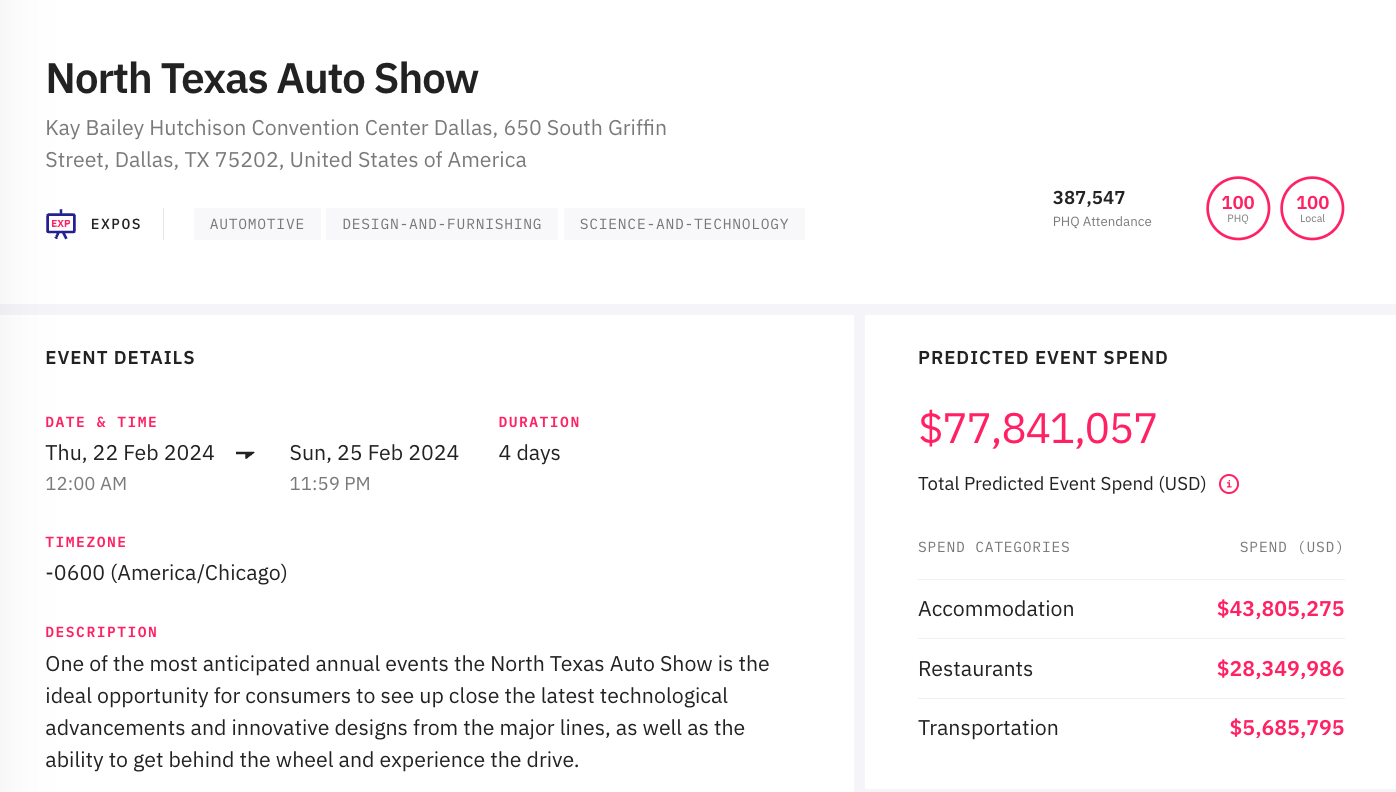
6. Leverage time series analysis and deep learning models
Time series analysis and deep learning models have revolutionized the way businesses approach forecasting. By combining these two powerful techniques, organizations can capture complex seasonality, trends, and hidden patterns in their data to make hyper-accurate predictions for the future.
Advancements in AI have significantly revolutionized time series forecasting, particularly in the realm of demand forecasting. AI techniques, especially deep learning models like LSTM and Transformer networks, have improved the accuracy of predicting demand patterns by effectively capturing temporal dependencies and seasonal trends in data.
These models excel in identifying anomalies and unusual patterns in-demand data, enabling businesses to respond proactively to unexpected changes. Additionally, AI-driven approaches have enhanced the granularity and precision of demand forecasts, facilitating more efficient inventory management, resource allocation, and strategic planning.
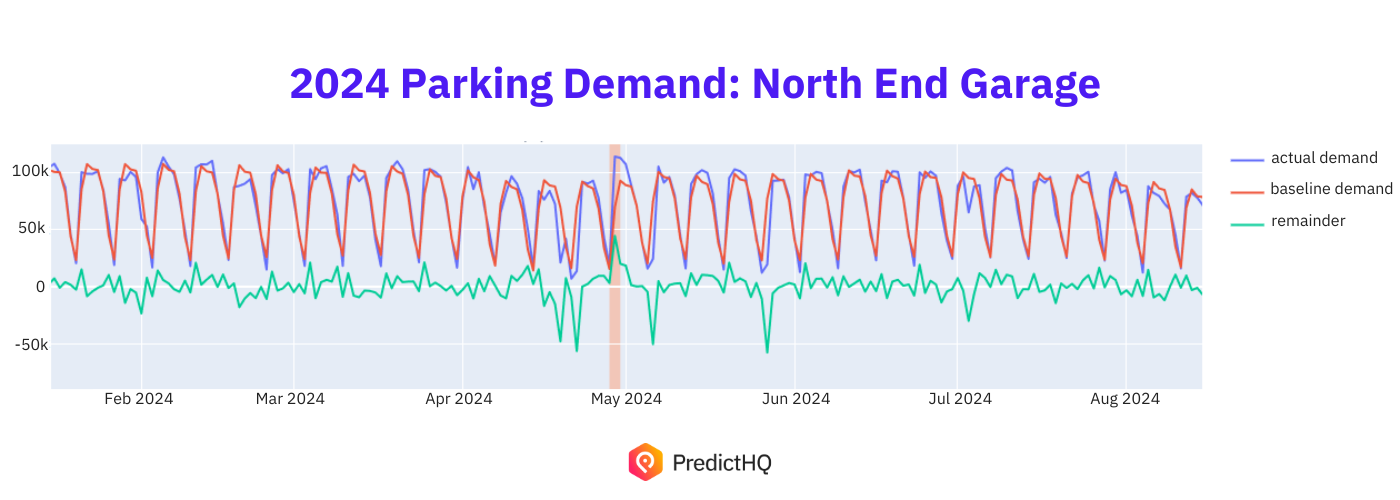
One of the key advantages of using these tools is their ability to handle large volumes of data and identify patterns that may not be immediately apparent – where traditional forecasting methods struggle with capturing the subtle nuances and fluctuations present in time series data, making it difficult to make accurate predictions.
Time series analysis and deep learning models excel at handling non-linear relationships and complex interactions within the data, whether it's seasonal fluctuations, long-term trends, or unexpected patterns that may signal an upcoming shift in the demand levels. These models are scalable and flexible enough to be easily adapted to different industries, data types, and forecasting needs, making them a valuable tool for businesses of all sizes and sectors.
7. Prioritize automated data collection and cleaning
Machine Learning (ML) algorithms can analyze vast datasets, identifying patterns and trends that are otherwise difficult to discern. By incorporating external factors like events, seasonality, promotions, and market trends, these algorithms recognize complex patterns and correlations that contribute to more accurate forecasting – and they need dynamic, reliable data to stay accurate.
Businesses who focus on ensuring only the most up-to-date, accurate data is pulled into their models will be the leaders in forecasting. By automating data collection and enrichment, you ensure that your models are consistently trained on the most recent and relevant information available. Real-time updates that reflect the world around us allow for agile decision-making, giving you a competitive edge in fast-paced markets.
As your business grows, so does the volume and complexity of your data. Stagnate data pulls, manual data collection, and manual cleaning can quickly become overwhelming, leading to bottlenecks and hampering your progress. Automation brings scalability to the forefront, effortlessly handling large datasets with ease. Whether you're dealing with thousands or millions of records, automated systems will seamlessly accommodate your evolving needs.
8. Invest in user-friendly tools for the larger team
Let's face it, complex forecasting tools and software often come with lengthy training periods, steep learning curves, and the potential for human error. These factors can seriously hinder adoption and limit the value you get from your forecasting efforts.
Invest in user-friendly interfaces and intuitive dashboards that are easy for everyone across departments to access, understand, and leverage. This way, data scientists can still be hands-on with data and APIs, and the executive team can get value out of the information as well.
Remember, the power of your forecasts lies in the actionable insights and explainability they reveal. That's why it's crucial to invest in tools that seamlessly integrate with your existing ecosystem, like Tableau, Microsoft BI, Observable, and others. By ensuring smooth data integration, you empower your organization to unlock critical insights through easy-to-digest graphs and charts.
Whether you're analyzing patterns by location, event category, or any other relevant dimension, the ability to visualize key data points fosters collaborative decision-making and drives profitable outcomes. While you may be neck deep in the models, this is an important step to ensure your business has easy access to data insights.
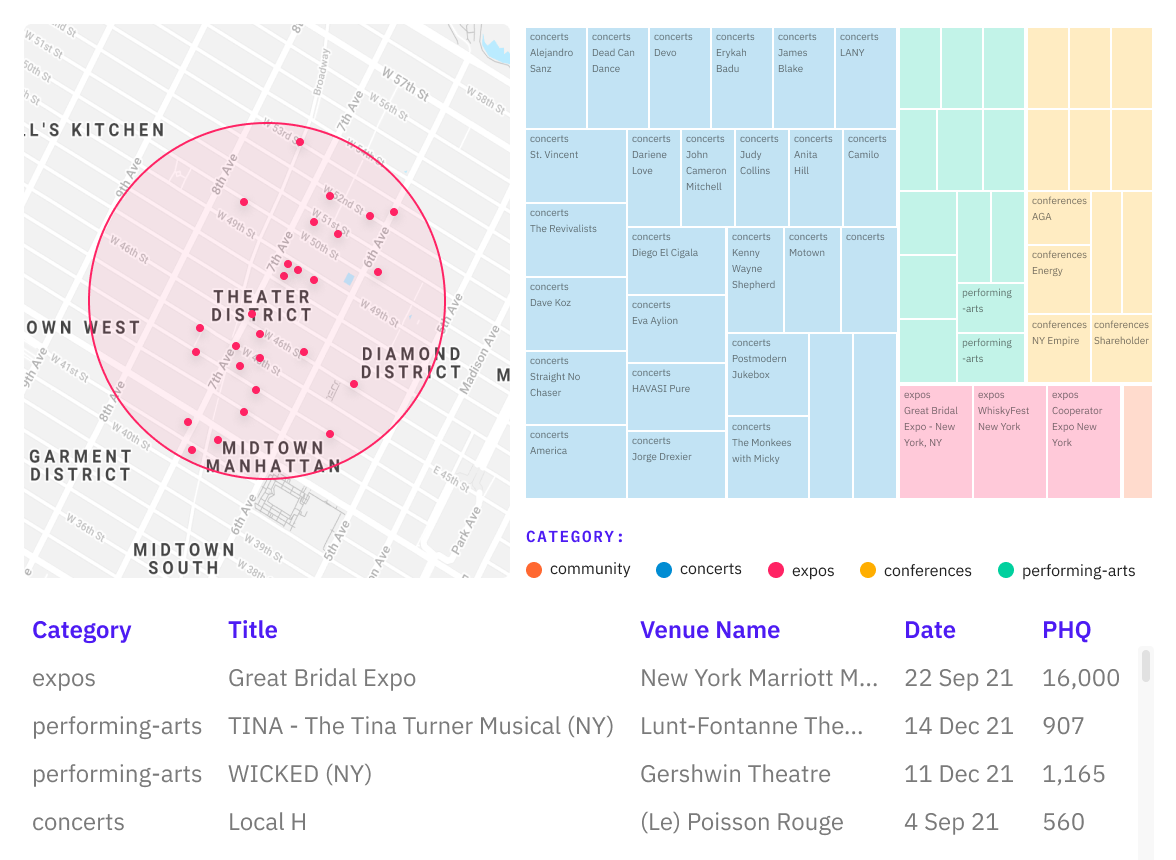
9. Collaborate across teams to foster continuous improvement
Forecasting is an iterative process. Regularly evaluate your models' performance, analyze forecast errors, and refine your approach based on new data and insights. Start by defining clear metrics and key performance indicators (KPIs) to measure the accuracy and effectiveness of your forecasting models. Track actual sales compared to forecasts, identify deviations early, and adjust production, inventory, or marketing strategies as needed.
Dive deep into the reasons behind forecast errors, leverage the power of data analytics to uncover hidden patterns and correlations, and consider adopting agile forecasting techniques such as rolling forecasts or scenario analysis to quickly adapt to changing market dynamics and make proactive adjustments when needed.
Another key element in building a culture of continuous improvement and data-driven decision making is to break down those silos! Encourage collaboration between all departments within your organization to share valuable insights, identify potential disruptions, and refine forecasting models based on collective knowledge.
With more cross-functional collaboration between sales, marketing, supply chain, finance teams, and operations, you’ll gather diverse perspectives and foster a data-driven culture where forecasts are integral to strategy and action.
10. Partner with experts that will lead the way
Every organization is unique, with its own set of challenges, goals, and industry dynamics. Consider partnering with and working with companies that have data science and forecasting specialists to collaborate with professionals who understand the specific intricacies of your business. They can tailor methodologies to align with your needs and objectives, ensuring that you receive forecasting solutions that deliver tangible results for your business.
By partnering with experts, you gain direct access to individuals who possess deep knowledge and expertise in these domains. The PredictHQ team has a large team of data science professionals that have dedicated their careers to mastering the intricacies of data analysis, statistical modeling, and predictive analytics. Their invaluable insights around event data can help you navigate complex forecasting challenges with precision and accuracy, enabling you to make data-driven decisions that drive business success.
Whether you're transitioning to automated solutions or facing complex forecasting demands, our experts will work closely with your team to design strategies that maximize your value.
Take control of demand volatility today with predictive demand intelligence
By implementing these strategies and embracing automation, you can unlock the true power of demand forecasting. Not only will you enable your business to reduce costs and increase revenue, but you'll also be able to anticipate customer needs, optimize pricing strategies, and make data-driven decisions that propel your business towards sustainable success.
Remember, the future is predictable, but only if you have the right tools and strategies in place. So, take control, automate your demand forecasting, and watch your business flourish!






